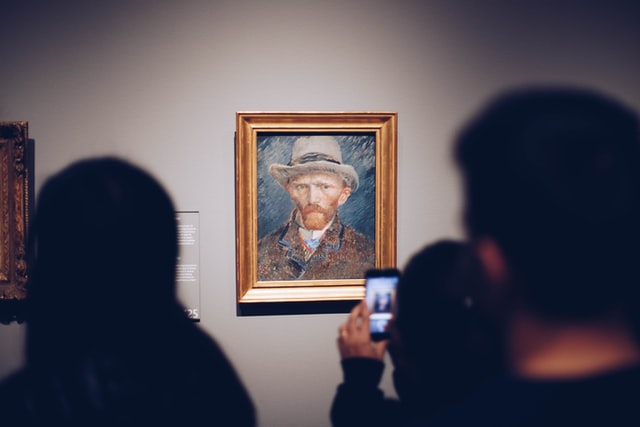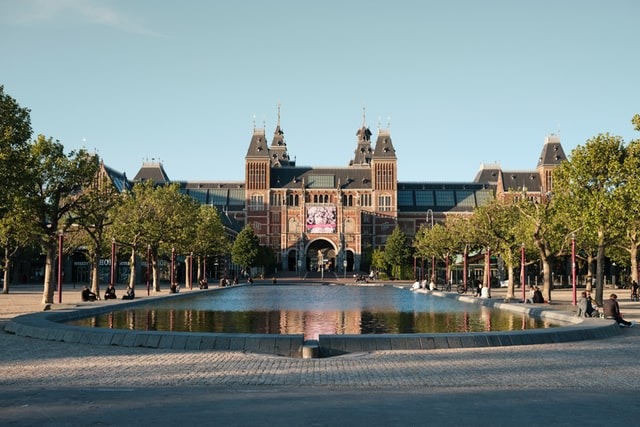Anne Frank House
Share this attraction
Back

Anne Frank House
Amsterdam
Anne Frank House - the most important information
The Anne Frank House is a writer's house and biographical museum dedicated to Jewish wartime diarist Anne Frank. The building is located on a canal called the Prinsengracht, close to the Westerkerk, in central Amsterdam in the Netherlands. The museum opened on 3 May 1960. It preserves the hiding place, has a permanent exhibition on the life and times of Anne Frank, and has an exhibition space about all forms of persecution and discrimination. In 2013 and 2014, the museum had 1.2 million visitors and was the 3rd most visited museum in the Netherlands, after the Rijksmuseum and Van Gogh Museum.
History of the Anne Frank House
During World War II, Anne Frank hid from Nazi persecution with her family and four other people in hidden rooms at the rear of the 17th-century canal house, known as the Secret Annex. She did not survive the war but her wartime diary was published in 1947. Shortly after the book was published, visitors were shown around by the employees who had hidden the families and could see the secret rooms. However, by 1955, the company had moved to new premises, and the entire block to which the building belonged was sold to a single estate agent who served a demolition order with the intention of building a factory on the space. Ten years later the Anne Frank Foundation was established to protect the property. Over the years, the building has had to be renovated to manage such a large number of visitors, and it closed temporarily for this reason in 1970 and 1999. On 9 September 2001, Queen Beatrix of the Netherlands reopened the museum.
What to see in the Anne Frank House?
When we talk about this museum, its importance is great. We can see here different things and more important the aura of this house is huge. Everyone who makes one step inside it can experience something special. You just have to experience it. Here are something that you will see being here:
- The main house and the annex: When Otto Frank was the only one to return from Auschwitz in June 1945, the annex was empty and barren. In 1960, the Anne Frank House opened its doors as a museum, but at Otto’s request, the annex stayed empty.
- Anne Frank’s room: Anne had to share a room with Fritz Pfeffer, which led to frequent arguments. Not being able to go outside was hard for her. Her diary was a place to vent. To brighten up the room, Anne put pictures on the wall.
- Diary room: Here you can see the original red-checked diary Anne Frank received for her 13th birthday on 12 June 1942. A few weeks later, the Frank family had to go into hiding. Once in the Secret Annex, it was not long before Anne had filled her diary, and she continued writing in notebooks.
- A Room Full of Dreams: This exhibition centers around the pictures and postcards that Anne Frank stuck on the walls of her bedroom.
- Reflections on Anne Frank: This exhibition contains a film in which 22 writers, actors, visitors, and people who knew Anne talk about what she has meant to them.
What should you know before visiting the Anne Frank House?
This museum has great importance and people who run it take good care of everything inside. You will have to obey some rules and to show great respect to the building and its significance. We are going to describe some things that you should probably know before visiting:
- There are many stairs in the Anne Frank House. If you have difficulty walking, you may have trouble climbing the steep stairs.
- The museum has a cloakroom where you can leave your coat, bag, umbrella, or buggy. Only bags that are smaller than an A4 sheet of paper can be carried inside. We do not have room to store large bags and backpacks, suitcases, or other large items. Please leave your luggage at your hotel before going.
- In order to protect the original items in the museum and to avoid causing a nuisance to other visitors, photography is not allowed in the museum.
- Always follow the instructions of the museum staff.
- You can take all the time you need for your visit. On average, a visit takes an hour.
- The audio tour is key to your visit to the museum. It provides you with more information about the persecution of the Jews, the Second World War, the people in hiding, and their helpers. The audio tour is an essential addition to the stories told inside the museum and to the documents and objects you will see there.
How to get to the Anne Frank House?
The Anne Frank House is located in the city center of Amsterdam, at Prinsengracht 263-267. The entrance to the museum is around the corner, at Westermarkt 20. There are several ways of public transport to this museum:
- via Train: It is a 20-minute walk from Amsterdam Central Station.
- via Tram: Alternatively, take tram 13 or 17 and get off at the Westermarkt stop.
- via Bus: 170, 172 or 174 to the Westermarkt stop
Opening hours and tickets for the Anne Frank House
- Opening hours: This museum is open every single day during the week from 9 am to 5 pm. Sometimes it may be closed for holidays or some significant dates.
- Tickets: The price for the adult ticket is € 14.00. For kids of 10-17 years, it is half the price, and for younger kids, the entrance fee is just 1 dollar.
We strongly recommend you to visit the official website of the Anne Frank House before visiting it, so you can check out the new working hours and buy tickets online.
Location
Learn more about this destination
Discover the beauty of the destination through blogs that highlight the most famous landmarks, hidden gems, and provide travel tips for visiting this destination. Embark on an adventure through the stories of experienced travelers.




















